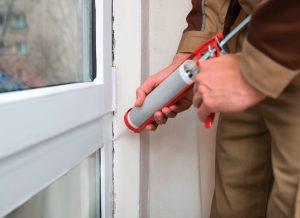 The average family spends nearly half a home’s total energy bill on heating and cooling costs, according to the U.S. government’s ENERGY STAR program. Ultimately, a large portion of those expenses are wasted due to poor home insulation.
The average family spends nearly half a home’s total energy bill on heating and cooling costs, according to the U.S. government’s ENERGY STAR program. Ultimately, a large portion of those expenses are wasted due to poor home insulation.
By using insulation in the interior of the home and exterior caulk and insulation to seal cracks and openings in the home exterior, you can reduce the cost of your air-conditioning and heating. Insulation and caulk work in two ways to add comfort to a home. First, they stop outside air from seeping in; second, they keep costly air-conditioning and heat from escaping. This is a powerful way to knock down home energy bills.
Experts advise homeowners to run through the following checklist to determine whether their home has adequate insulation:
- Vintage home: Prior to consistent building codes, most homes built before 1980 were not insulated. If a home has no materials trapping heat, energy conservation is an uphill battle. Walls, ceilings and floors are the most important areas to add insulation for an immediate, positive impact on a home’s energy usage and bills.
- Non-stop furnace: If your furnace seems to run non-stop in the winter, your home may not have adequate insulation. Having adequate insulation leads to less maintenance on a heating system as it runs less, and it will last longer.
- Temperature inconsistency: If cold spots are coming from the walls or attic, or one room is drafty but another one warm, it is another sign of poor insulation. The fireplace, walls and attic are prime spots for drafts. Look for insulation that can fit snugly in rafters and other tight areas.
- Inadequate attic: Check the attic for adequate insulation since heat may be escaping through your roof. If the floor joists are visible, it needs more insulation.
- Mold growth: Mold in the corners of ceilings could mean that the current insulation slumps and holds moisture. If this occurs, it’s time to replace the old insulation with insulation that does not store or transfer moisture and is completely resistant to mold, mildew, rot and bacterial growth.
Also, do a walk-around inspection of your home exterior. Look for key indicators that heat is escaping from the home. Keep an eye out for cracks, gaps, or holes, especially where different surfaces meet or where pipes, vents, or wiring penetrate the walls. Look for areas where your old caulk may have cracked or pulled away from the surface. Every one of these areas is a potential energy sieve and prime real estate for your caulk or insulation.
 If the old caulk is damaged or deficient, remove it with a scraper or sturdy putty knife. In these areas and in areas that are totally devoid of caulk, clean the adjacent surfaces, sand them smooth, and spot-prime if any bare wood shows. This will help your caulk adhere properly to create a weather-tight seal.
If the old caulk is damaged or deficient, remove it with a scraper or sturdy putty knife. In these areas and in areas that are totally devoid of caulk, clean the adjacent surfaces, sand them smooth, and spot-prime if any bare wood shows. This will help your caulk adhere properly to create a weather-tight seal.
When applying your new caulk, be sure to use a top quality product, either a water-based all-acrylic or siliconized acrylic caulk (similarly named “silicone” caulks cannot be painted; so, they’ll be more visible on your home exterior).
With a loaded caulk gun in hand, work your way around your house filling every gap or seam with a generous bead of caulk.
Immediately after applying the caulk, “tool” it by running a wet finger over the full length of the bead, using a slight amount of pressure. This will ensure that the caulk fills the entire gap and makes good contact with the adjacent surfaces.
 Openings that are too large to caulk – typically, spaces more than ¼” wide – should be filled with a polyurethane foam insulation product. Unlike caulk, which shrinks slightly as it dries, some types of polyurethane foam actually expand after being applied. So, this type of insulation is ideal when filling large openings and cavities.
Openings that are too large to caulk – typically, spaces more than ¼” wide – should be filled with a polyurethane foam insulation product. Unlike caulk, which shrinks slightly as it dries, some types of polyurethane foam actually expand after being applied. So, this type of insulation is ideal when filling large openings and cavities.
After sealing every opening you see, take a break. Then, do one last walk-around to make sure you haven’t missed anything. Often, you’ll spot a few areas that still need attention. After attending to these spots, sit back and enjoy your cool air or heat knowing it will stay inside and save you money.




